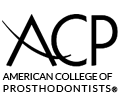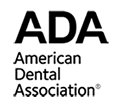You have a problem. We have the solution.
-
All on 4 Ricky
-
All on 4 Sheryl
-
All on 4 Shawn
Short-Term Success of Dental Restoration With All-on-4 and All-on-6 Utilizing Variable Thread Profile Implants
The results of a recent much-required study about the effectiveness of widely-used variable thread profile – about which published research on the success and failure associated with this implant type is scarce – generated useful data, which can be used by implant dentists.
In the study, nine patients’ teeth were restored with fixed, screw-retained dentures on four or six implants. On the whole, 58 variable thread profiles, self-drilling maxillary and/or mandibular dental implants were inserted.
The dental patients were followed up for 1.5 years, and during this period, they were regularly evaluated for clinical signs of implant failure. Their bone levels were found radiographically: first right after insertion of the implant, and then after 1.5 years. Bone loss was prescribed as the difference between the two bone level measurements.
What Did The Study Reveal?
During the follow-up period, there was no implant failure or an occurrence of any complication. The findings were similar to those associated cylindrical implants. The All-on-6 technique produced a significantly more favorable bone response compared to the All-on-4 dental technique – possibly due to the more favorable load distribution.
But, the bone loss associated with the All-on-4 technique was within the range reported in connection with cylindrical dental implants.
The results conclude that the bone response to variable thread profile dental implants - applied according to the exercised techniques - is as encouraging as when cylindrical implants are used.
The study was authored by MárkÁdám Antal and Donát Simon-Fiala (both belonging to Department of Esthetic and Operative Dentistry, University of Szeged, Hungary); Gábor Braunitzer (Department of Oral Surgery, University of Szeged, Hungary); and Csaba Csák of DentArt Klinik, Hungary.
Why Study Tapered/Cylindrical All-on-4 Implants, Osseointegration, And Bone Loss?
Dental restorations using implants are a proven and effective solution for the rehabilitation of edentulous patients. The dental literature shows that the implant overdenture prosthesis produces predictable results such as enhanced function, stability, and a higher level of patient satisfaction compared to traditional removable dentures. However, data indicates that most dental patients, including those having alveolar bone atrophy, would prefer a non-removable restoration solution if given a choice.
Now, we know that the success of dental restoration, which is implant-retained and non-removable, is decided by two factors. One, the implants must be inserted in a way that the cantilevers are kept short. Two, the primary stability of these dental implants must be high enough to enable both immediate loading and final rehabilitation without the occurrence of significant bone loss.
As shown by Malo (Dr. Paulo Malo, the originator of the All-On-4® dental treatment concept), prosthetic rehabilitation utilizing a fixed, screw-retained denture on four or six implants is a workable concept. These dental techniques - referred to as all-on-four and all-on-six – reduce cantilever length by utilizing inclined implants in the distal positions. In this way, the whole dental arch can be rehabilitated safely.
Studies show that the five and ten-year survival rates of such dental replacements can be close to 100% - both prostheses and implants.
A study by dental researcher GV Duello in 2012 shows that the use of a fixed prosthesis on four implants is firmly based and supported by basic sciences principles, and also proposed an evidence-based protocol for the immediate restoration of edentulous patients utilizing this technique. It has also been established that this solution immediately reduces the morbidity associated with tooth teeth, while also overcoming issues associated with traditional removable prostheses. Overall, the principle seems to work if the dental implants meet the requirements.
Do Tapered And Cylindrical Dental Implants Differ In Results?
In the past, the majority of dental studies on all-on-four and all-on-six were conducted using cylindrical implants. But, knowledge related to the not less widely used (and increasingly popular) variable thread profile dental implants is limited in this regard.
Usually, tapered dental implants seem to be better than cylindrical implants to achieve immediate loading. And the majority of studies show that the bone loss is comparable. In fact, one study concluded there was significantly less bone loss.
Inserting a tapered dental implant needs a higher torque than the placement of a straight, cylindrical implant. Insertion torque, demonstrably, is the most compelling prognostic factor for the Osseointegration of immediately-loaded splinted dental implants.
Overall, tapered dental implants seem to have many favorable characteristics. However, little is known about bone response if they are applied as per the all-on-four and all-on-six protocols to rehabilitate a prosthetic.
So, this dental study’s aim was to shed light on this issue and get an answer to the question: is there is any difference between non-tapered and tapered dental implants in terms of Osseointegration as marked by the bone response?
Based on existing dental literature, it was conjectured that the application of tapered dental implants would lead to a similar or more favorable bone response compared to what’s observed when cylindrical dental implants are used for the same purpose.
Materials and Techniques Utilized In Study
The study involved the participation of 9 patients - 5 women and 4 men with a mean age of 61.45 years. The patients were placed with fixed, screw-retained dentures on six or four dental implants - depending on occlusal, bone availability, and financial considerations.
The P7 dental implant – with variable thread profile - of the SGS Dental Implant System (Schaan, Lichtenstein) was utilized. Apart from the variable thread profile, these dental implants have a condensing cone core. An extensive self-drilling is attained by sharp threads at the apex.
The implant-abutment joint area is an internal hexagon, and minimizes the possibility of formation of microgap and also enables the optimal connection. The dental implants are coated with calcium-phosphate, which has a beneficial effect on osseointegration according to a separate study.
The design of the study was as per the guidelines of the Declaration of Helsinki in all aspects. The patients were given information about the procedures to be used in the study, objectives, and possible risks: all through written forms and orally.
Patients participated voluntarily in the study and enrolled only after providing their written consent. The inclusion criteria included mandibles/maxillas or edentulousness with very bad teeth in urgent need of fixed dental implant restorations as demanded by the patients. The treatment sessions were held in a private dental clinic, and all dental operations were carried out by an experienced dental surgeon.
Dental implant placement was done after observing the guidelines mentioned by Malo. In all study cases, a final torque of over 40 Ncm was achieved, and the distal implants were put in an inclined position.
Fifty-eight implants were placed. In twenty-eight cases, the all-on-four protocol was used, and in thirty cases, the implant placement was as per the all-on-six protocol. Two dental patients received all-on-four AND all-on-six dental restoration in the mandible and the maxilla, respectively. Five patients received an all-on-four in the mandible, one received an all-on-six in the maxilla, and one received an all-on-six in both the maxilla and mandible.
Rehabilitation of Prosthetic
Following placement of the implant, each patient was immediately given the restoration: an acrylic, temporary screw-retained prosthesis. The final prosthetic was placed after a three-month healing period. A porcelain-fused-to-metal bridge, which was screw-retained, was the final replacement in all cases.
Evaluation of Radiographic Data
A detailed radiograph was taken right after implant insertion, and a follow-up was done after 1.5 years. The magnification ratio gap was reduced by calculating the height of the positioned implant and measuring the height of the implant in the image.
Published protocols were utilized to calculate bone loss, which was defined as the distance between the alveolar crest and the fixture-abutment connection and was measured after analyzing the height of the alveolar crest line from both the mesial and distal side of each dental implant.
In the study, the mean periimplant loss was determined as the sum of the losses measured at the distal and mesial sides of each dental implant divided by two. The average bone loss yielded by the given dental implant technique - all-on-four or all-on six - was calculated as the grand mean of mean losses. And only vertical bone loss was measured, and bone gain was considered zero bone loss. Measurements were taken right after implant insertion (baseline) and during the follow-up with the WixWin Platinum software.
Due to variations in exposure time, observer perception, and exposure geometry, the method of measuring the level of marginal bone had an accuracy of 0.2 mm or more. So the results were analyzed after taking into consideration this limitation.
Statistical Analysis
Analysis of statistical data was carried out with SPSS 17.0 (SPSS, Inc., Chicago, USA). The data were distributed normally (Shapiro-Wilk p<0.05), therefore, comparisons were carried out with ANOVA. The level of significance was fixed at p<0.05.
The research outcome data were analyzed both by technique (all-on-four or all-on-six) and by maxillary or mandibular restoration. For inclined implants, bone losses on the distal and mesial sides were also compared – including comparisons with non-inclined implants.
When the 1.5-year follow-up period was considered, no clinical signs indicating disturbed osseointegration were seen, osseointegration was successful in all cases, and no implant loss was observed.
Key Findings
The comprehensive study had an important finding. It was found that the bone response to self-drilling titanium-type dental implants, which have a condensing cone core and a variable thread profile, when applied as per all the all-on-six or all-on-four protocols - is commensurable to what’s mentioned in the literature about the connection with cylindrical implants applied in the same method. Moreover, successful osseointegration was achieved in all cases without any complications.
Data analysis showed that variable thread profile implants are generally more favorable in terms of average bone loss, as per some studies. However, it is yet to be established with certainty.
But, the results enable us to conclude that the profile of the implant, in itself, does not influence bone loss in a significant way. This finding is in line with what most studies have found about tapered implants in multiple applications.
It can, therefore, be concluded using variable thread profile implants for all-on-six and all-on-four dental restorations is a safe alternative.
The discovery that the bone response was better when the all-on-six technique was used was not surprising. Needless to say, the distribution of the applied load to the prosthesis is more favorable when it’s supported by six implants. This also explains the superiority of maxillary implants when it comes to the bone response. Most maxillary rehabilitation is undertaken with the all-or-six technique instead of the all-on-four, and the technique was applied only in the maxillae of the dental patients in the study.
So it can be argued that the favorable response can be attributed to the technique and not some factor related to the bone. Moreover, while the all-on-four technique led to more bone loss, the loss was within the range reported in connection with cylindrical dental implants.
Another point of the research was: do the inclined implants lead to less favorable bone response on either side due to technique as compared to non-inclined dental implants placed as per the same technique. Similar bone loss was found irrespective of whether the inclined dental implants were inserted as per the all-on-four or the all-on-six implant protocol. The loss was comparable with the bone loss observed with the non-inclined implants.
However, the study results should be considered with caution as the subgroups had a small sample size.
Weak Points of The Study
Like all studies, this one too had its weaknesses. One of them was the relatively small sample size: a factor that makes drawing absolute conclusions difficult. Nevertheless, it may be pointed out that implant success was achieved in all the inserted fifty-eight implants: indicating at least a strong tendency, which is an important piece of information for practicing implant dentists.
When it comes to methodology followed, using panoramic radiographs was debatable. There may be other methods for measuring exact bone loss, but for this study, this technique was appropriate. The objectives were to record successful osseointegration, and exclude the possibility of excessive bone loss. By using panoramic radiographs, researchers could determine the extent of bone loss and whether the bone loss was associated with the use of variable thread profile implants was significantly different from what is seen with cylindrical implants in terms of magnitude.
Moreover, even though more precise methods are available, panoramic radiographs are widely used to study bone loss: given that several recent studies use this method.
Another weak point was that the follow-up period was brief. While this is correct, the short period was sufficient for the study’s purpose. The aim was to examine the success of osseointegration in the case of these dental implants and observe if the implants integrate with higher accompanying bone loss compared to the cylindrical ones.
Therefore, long-term implant survival was not within the scope of the study. So, one and a half years were sufficient to find answers to these questions.
Final Conclusion
Undoubtedly, more studies with larger samples are required. However, results of this study results indicate that variable-thread profile implants, when applied according to the all-on-four or the all-on-six dental technique, are probably just as safe to utilize in these protocols as cylindrical ones.
**OAC (620 score or higher)
*Cash Payment Discount
*** Cannot be combined with any other offers or insurance.
25 Years of Experience. Over 10,000 Smiling Patients.
What some of our patients are saying
@Copyright 2024. All Rights Reserved.



-new.png)


























































